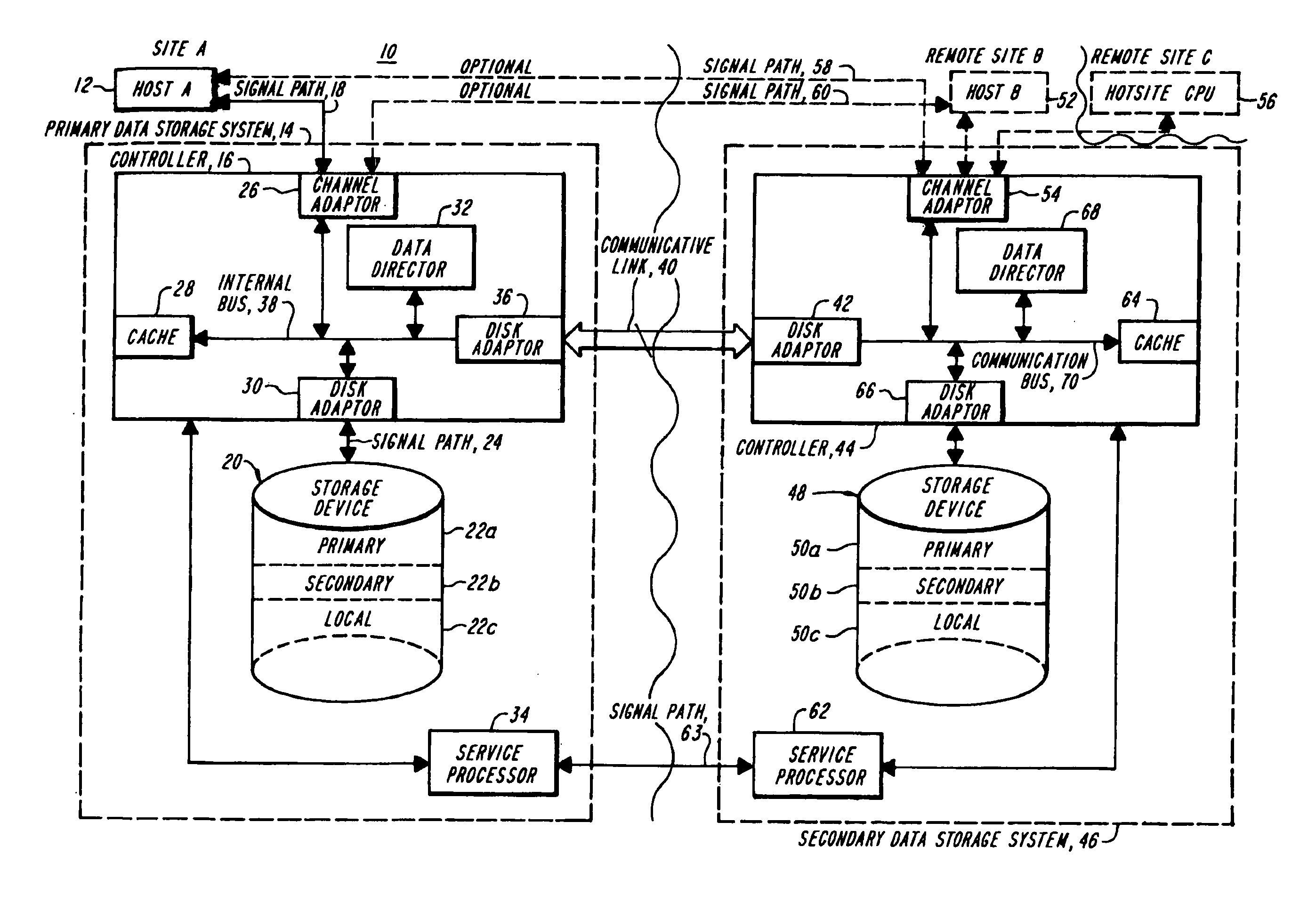Remote data mirroring
a remote data and mirroring technology, applied in the field of data storage, can solve the problems of inability to back up data, low cost, and inability to provide primary as well as secondary or backed up data to the user, and achieve the effect of less manpower and facilities and cost reduction
- Summary
- Abstract
- Description
- Claims
- Application Information
AI Technical Summary
Benefits of technology
Problems solved by technology
Method used
Image
Examples
Embodiment Construction
[0059] A. Overview
[0060] The present invention features a system which provides a geographically remote mirrored data storage system which contains generally identical information to that stored on a primary data storage system. Utilizing such a system, data recovery after a disaster can be nearly instantaneous and may require little, if any, human intervention. Using the present system, the data is retrieved from a remote device through the host data processing system.
[0061] A system in accordance with the present invention is shown generally at 10, FIG. 1, and includes at site A, which is a first geographic location, a host computer system 12 as is well known to those skilled in the art. The host computer system 12 is coupled to a first and primary data storage system 14. The host 12 writes data to and reads data from the primary data storage system 14.
[0062] The primary data storage system 14 includes a primary data storage system controller 16 which receives data from the hos...
PUM
| Property | Measurement | Unit |
|---|---|---|
| distances | aaaaa | aaaaa |
| link distance | aaaaa | aaaaa |
| volumes | aaaaa | aaaaa |
Abstract
Description
Claims
Application Information
 Login to View More
Login to View More - R&D
- Intellectual Property
- Life Sciences
- Materials
- Tech Scout
- Unparalleled Data Quality
- Higher Quality Content
- 60% Fewer Hallucinations
Browse by: Latest US Patents, China's latest patents, Technical Efficacy Thesaurus, Application Domain, Technology Topic, Popular Technical Reports.
© 2025 PatSnap. All rights reserved.Legal|Privacy policy|Modern Slavery Act Transparency Statement|Sitemap|About US| Contact US: help@patsnap.com



